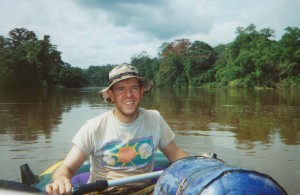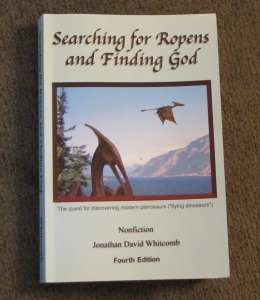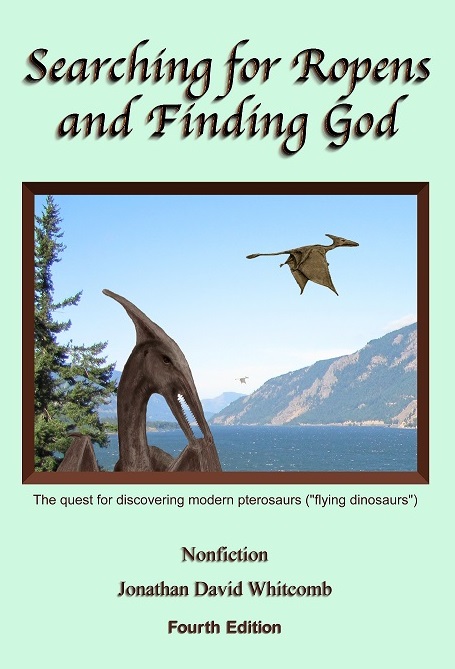Peter Beach and Milt Marcy, both of the Portland area of Oregon, led an expedition in Papua New Guinea, in March and April of 2015, searching for a living pterosaur that previous American explorers had failed to see clearly. This time Americans did see, in daylight, the form and features of an apparent pterosaur.
The exact location in Papua New Guinea is undisclosed for the present, while follow up investigation continues there. Unfortunately no photos or video were obtained during the sighting.
Beach and Marcy hope for success with a native who was given a camera and appeared determined to get back into that area of the jungle to videotape a pterosaur.
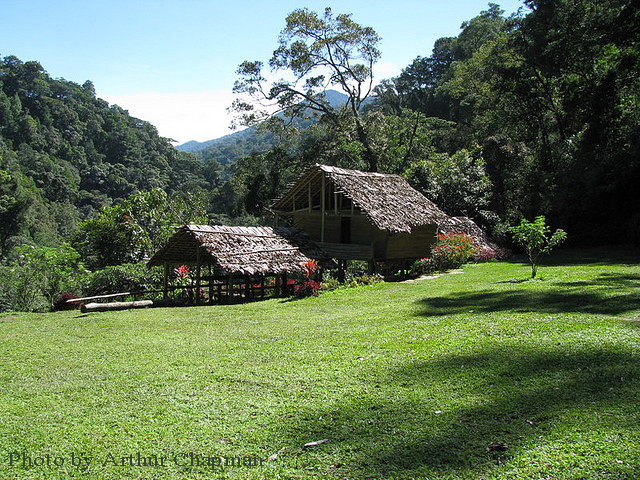
Generic photo of huts in Papua New Guinea, not directly related to the 2015 apparent-pterosaur sighting
Non-Ropen Pterosaur Sighting in 2015
The recent sighting in Papua New Guinea involved several eyewitnesses, including the Americans Peter Beach and Milt Marcy. I interviewed them separately, in three phone conversations, from April 20-23, soon after they had returned from their expedition, having been away in the southwest Pacific for about six weeks.
Marcy told me he does not want to go on record as being 100% convinced it was a pterosaur that they had seen. He did agree, however, to the estimate that it was more than 50% likely to have been so.
Peter Beach, a former biology professor, has tried to come up with some non-pterosaur explanation for what they saw, but as of April 23, 2015 (during our second phone conversation) he could not, for it was too much like a pterosaur. He could not see any evidence of feathers, so a bird seems questionable; he saw soaring-gliding flight, so a Flying Fox fruit bat is practically eliminated. He saw huge wings that were leathery and they gave an impression more like a parachute than like feathery wings.
From the telephone interviews I had with those two Americans and from what I have learned from other eyewitnesses in that area of Papua New Guinea, I believe this recent sighting was of a Pterodactyloid (short-tailed) pterosaur. In other words, it was probably not a long-tailed ropen, but it was what many Americans would call a pterodactyl.
Significance to Living-Pterosaur Investigations
Careless skeptical speculations about dishonesty in natives in Papua New Guinea—that decomposing body needs to be buried and never again dug up, so to speak. Most of the more-credible sighting reports of apparent pterosaurs in the southwest Pacific have been by Western eyewitnesses, anyway. Some of them have included the following:
- Duane Hodgkinson (in recent decades a flight instructor)
- Brian Hennessy (in recent years a professional psychologist)
- An Australian couple (together they saw the huge creature in Perth)
- A British pilot and Australian co-pilot flying northwest from Australia
That is not to say that natives of Papua New Guinea have had fewer encounters or less dramatic ones than Americans and Australians. After all, some of those native eyewitnesses have been carried off and eaten by some of the larger flying creatures (according to some indirect reports), and you can’t get closer or more dramatic than that. But we Westerners have a lot fewer detailed reports from natives we can directly question in face-to-face interviews.
Careless speculations that ropens or modern pterosaurs in Papua New Guinea are only legends—that does not fit with human experience, and it is human experience that lives at the heart of scientific progress.
Background of Peter Beach and Milt Marcy
I had interviewed both men last year, on the banks of the Yakima River in southeastern Washington state. They had witnessed flying lights over that river and knew a man who had reported an apparent “pterodactyl” in a tree on the bank of that river. But before their recent expedition in Papua New Guinea, they had never seen an apparent pterosaur in daylight, with form and features visible.
I submit that these two men would not have spend many thousands of dollars on this expedition in Papua New Guinea if they intended to deceive anybody. A liar would have just declared seeing a clear form of a pterosaur in southeastern Washington state, rather than spend his own money to go to Papua New Guinea to look for those flying creatures.
###
.
Possible Ropen off Coast of Indonesia
H. put the plane into a dive but the creature also dived. H. then avoided a collision by banking away from what he and his co-pilot thought was something like a “pterodactyl.”
Pterosaur Expedition in Papua New Guinea
On Saturday, April 18, 2015, two American explorers returned from Papua New Guinea, after searching for living pterosaurs on a tropical island where the creatures were previously reported. . . . Both Americans saw, in daylight, a huge apparent living pterosaur.
Ropen or Pterodactyl Seen by American
In 1944, in (Papua) New Guinea, Duane Hodgkinson and his friend saw a “pterodactyl” with a wingspan similar to a Piper Tri-Pacer (29 feet).
Ropen-Pterosaur Seen in Washington State?
On August 6, 2014, I interviewed Milt Marcy and Peter Beach on the bank of the Yakima River in Washington state. I knew, when we arrived for the interview, about the flying light that they had witnessed one night and the apparent pterosaur that another man had encountered in daylight
.



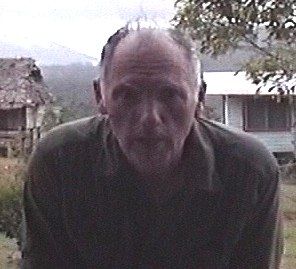
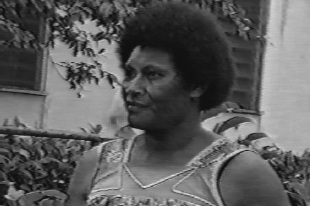 Eunice, an eyewitness on Umboi Island, Papua New Guinea
Eunice, an eyewitness on Umboi Island, Papua New Guinea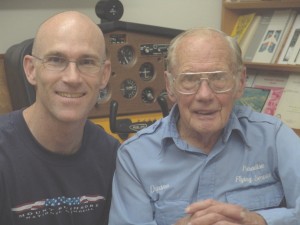 Garth Guessman and Duane Hodgkinson, both eyewitnesses of one or more living pterosaurs
Garth Guessman and Duane Hodgkinson, both eyewitnesses of one or more living pterosaurs